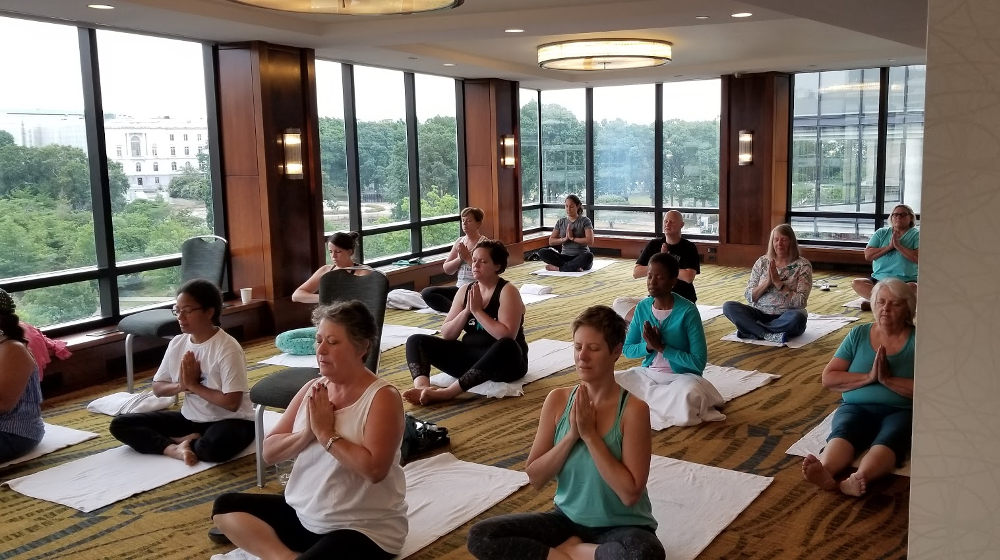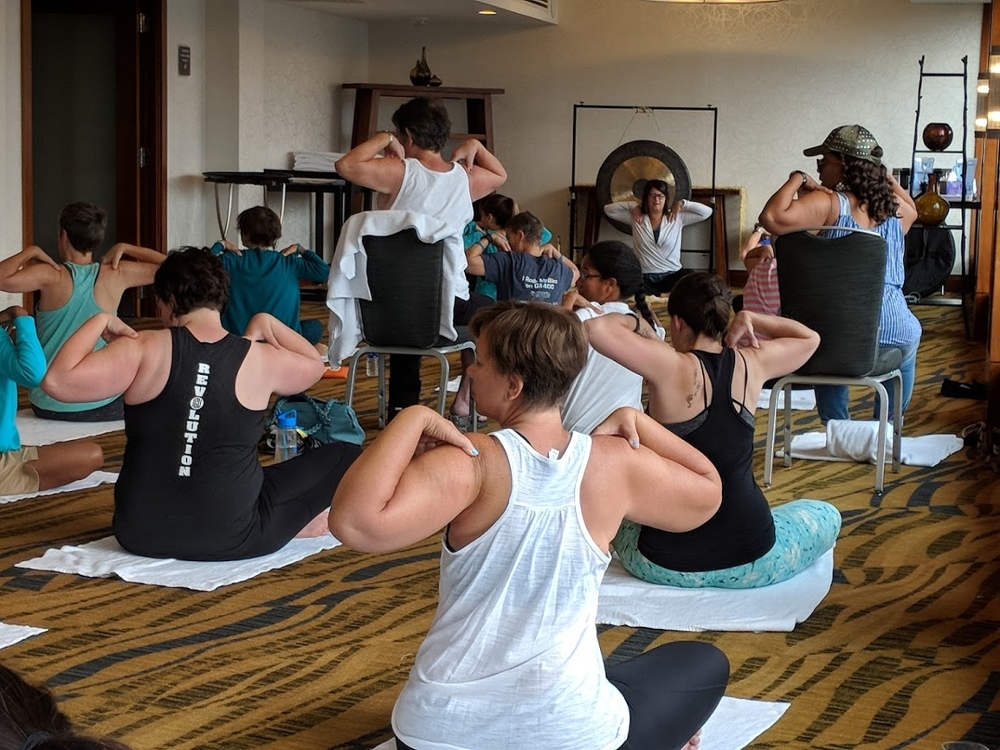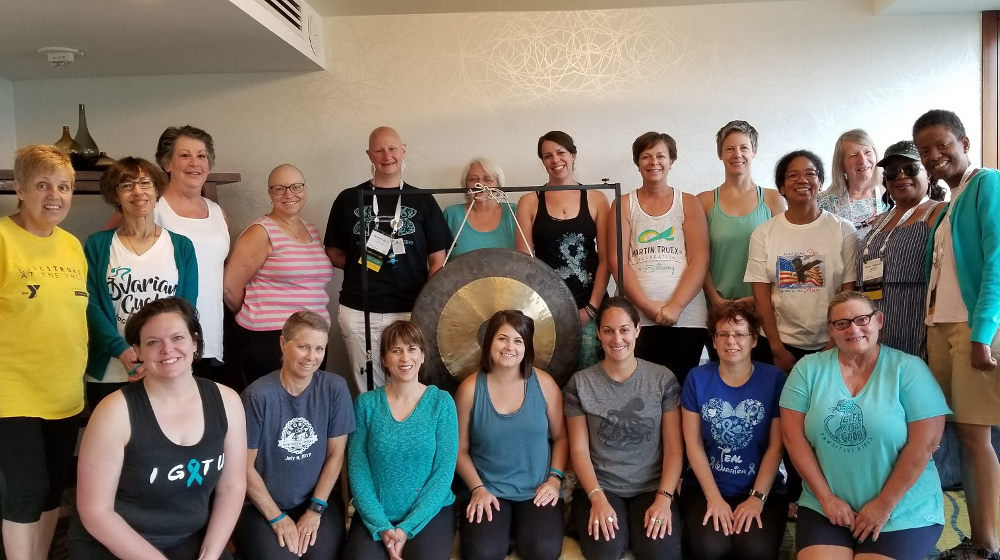Leading a yoga class for ovarian cancer patients and survivors

Bright and early at 7 a.m. I made my way to the conference room space designated for me to teach yoga at the Ovarian Cancer Research Fund Alliance (OCRFA) National Conference, which took place July 13-15. It was day one of the conference and I wasn’t sure how many attendees would wake up to join me, but the space felt healing and ready to go. Prior to coming, I decided that no healing Kundalini yoga session is complete without a gong bath. I was lucky enough to have the ladies of the NormaLeah Ovarian Cancer Initiative in the Quad Cities offer to take the gong on a journey from the Quad Cities to Washington, D.C. by road. Slowly, survivors, their spouses and their sisters started filing in to the space and taking their seats on the conference room floor, and we began.
My mom was diagnosed with stage IIIC ovarian cancer in August 2014. Prior to her diagnosis she had been an active yogini living a yogini lifestyle. We attended yoga teacher training together, finishing our 200-hour certification in August 2013. Her diagnosis came as a complete surprise to us and turned our lives upside down. The type of ovarian cancer she had is considered platinum resistant. Platinum chemotherapies are the primary treatments for ovarian cancer patients, and when used on someone like her, they just don’t work. My mom passed away on Feb. 4, 2016.
Since the passing of my mom, I have embraced the ovarian cancer community and have become an advocate leader with the OCRFA to help raise awareness and to increase funding for research. Teaching yoga to cancer survivors and cancer patients is a delicate thing. All of the women in the class were in different stages of their cancer journeys, so as I taught, I continued to remind them that depending on where they were, it may affect how far they go into the practice that morning. With every posture I talked about what parts of the body they were working on. If someone is newly out of their debulking surgery, her abdominal muscles could still be too weak and sore to do too much movement, but if someone else in six months out of chemotherapy and trying to regain muscle, working her abdominal muscles is exactly what she needs to do.

After asana and some pranayama, I asked everyone to relax into Savasana and to make themselves comfortable as I began the gong bath. Quickly I could see bodies relax and some float away into sleep. The energy felt relaxed and exactly what these women needed. Before I knew it, I was waking them back up and bringing the class to a close. I received many gracious “thank you’s” but my favorite feedback was from one survivor who told me that she slept deeper during the 15 minutes of gong bath than she did the entire night in her hotel. The power of yoga is strong!
It was an honor to go to Washington, D.C. to teach these amazing women yoga, and to be a part of their cancer journeys. During this Ovarian Cancer Awareness Month, take some time to know the statistics and the signs and symptoms of this devastating disease. Ovarian cancer ranks fifth in cancer deaths among women in the United States, but is the deadliest of the gynecologic cancers, with a five-year survival rate of 46.5 percent. Approximately 22,240 new cases will be diagnosed, and 14,070 women will die of ovarian cancer in the United States in 2018.
While ovarian cancer can be hard to detect and is often treated in the later stages, there are signs and symptoms that can be recognized by patients and their families. An easy way to identify and remember the symptoms is with the acronym BEAT:
Bloating that is persistent
Eating less, feeling fuller
Abdominal and/or back pain
Trouble with your bladder and bowels
If you, or someone you love have these signs and symptoms, make an appointment with your gynecologist.
Sat nam.

Bridget Toomey, RYT-200 teaches Kundalini Yoga at Heartland Yoga in Iowa City. She is a Reiki Master Practitioner and is currently working towards her RYT-500 in the Kundalini tradition in Kansas City, MO. Bridget is an OCRFA Advocate Leader and is a presenter in the OCRFA Survivors Teaching Students program. Bridget works in Patient Financial Services at the University of Iowa and is pursuing her master’s degree in Health Care Management at Johns Hopkins University. Follow her on Instagram:@IowaKundaliniYogini.


